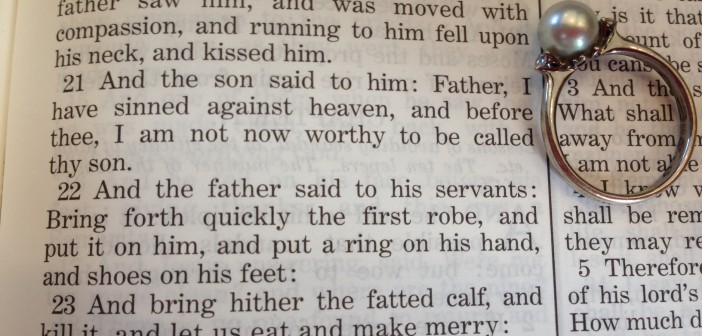In case social media and/or your mailbox hasn’t made this abundantly clear yet, let me be the first to announce that it’s officially wedding season.
I thoroughly love the Byzantine liturgies of Betrothal and of the Mystery of Crowning, and that love increases as I grow in the Byzantine faith. The Byzantine marriage liturgies offer the Western world a different vantage point of Christian marriage. They emphasize certain aspects of marriage that generally take less focus in Western weddings, including Roman Catholic weddings. (Likewise, Western weddings emphasize other important aspects of marriage). In a society where marriage is truly a dying art, the Byzantine wedding gives a unique illumination of three important principles for a good marriage: God’s faithfulness to his people, the importance of community, and the call to martyrdom.
During this wedding season, I thought it would be appropriate to discuss--using a three-part series--each of these principles and how they are uniquely presented in the Byzantine church. I hope these ideas can be as helpful to you as they have been to me.
God’s faithfulness to His people
Generally in American marriages, we emphasize the fidelity of the spouses. The exchange of rings is typically seen as the symbol of this fidelity. But historically, the rings served another purpose in reminding us of God’s faithfulness as well, and the Byzantine wedding liturgies preserve this symbolism.
The exchange of rings takes place in the Byzantine liturgy of Betrothal (which, by itself, is not a complete Christian marriage). Today, the Betrothal can be celebrated in the narthex of the church at the beginning of a wedding or in front of the congregation several days or months prior to the wedding. It is, in either case, kept separate from the Mystery of Crowning, and it is a public proclamation of "mutual faithfulness" (Meyendorff 30).
Although this liturgy serves to affirm and announce the couple’s commitment to one another, the rings do not symbolize merely human efforts. Rather, the rings are given in the context of prayers containing several Biblical references explaining how the ring is also symbol of God’s faithfulness to his people (Meyendorff 32):
"By a ring power was given to Joseph in Egypt; by a ring Daniel was glorified in the land of Babylon; by a ring the uprightness of Tamar was revealed; by a ring our heavenly Father showed His bounty upon His Son, for He said: Bring the fatted calf and kill it, and let us eat and make merry," (Meyendorff 116).
This “theme” of God’s faithfulness to his people is further emphasized in the Crowning. This liturgy includes numerous prayers referencing the ancestors of Christ. As Orthodox priest Father John Meyendorff explains, “the Biblical personalities and episodes enumerated in the prayers affirm the first and foremost truth: that God remains faithful to His people in spite of all historical vicissitudes and human sins, as long as man has faith in God” (36). Furthermore, as the ancestors of the messiah, all of these Old Testament figures point to the ultimate sign of God’s faithfulness in Jesus Christ.
Let me exit essay-mode for a minute to say wow. This is how the Church begins a couple’s life together in marriage: by reminding them that, first and foremost, God is faithful and that it is precisely because of God’s faithfulness in giving Himself to us that marriage can be an indisolluble, sacramental mystery and not simply a legal contract.
Understanding God's faithfulness also enables us to live the martyrdom to which we are called and through which we are saved in Christ. We'll talk about that more soon, but first we need to discuss the role of the community in Christian marriage, coming up in part two of this series.
A note about my source: I have referenced Father John Meyendorff's book Marriage: An Orthodox Perspective. This book is an excellent resource for Eastern Catholics wanting to learn about the marriage liturgies, and in general, everything Father Meyendorff explains about the liturgies is in line with Eastern Catholic teaching. However, marriage theology and canon law is one of the very few areas where Eastern Catholics and Eastern Orthodox Christians differ substantially. A Catholic reading this book should understand that, while it is an excellent source for understanding Orthodox teaching on marriage, it is not 100% congruous with Eastern Catholic teaching.
Copyright 2015, Brittany Balke
Photo courtesy of Brittany Balke. All rights reserved.
Works Cited
Meyendorff, John. Marriage: An Orthodox Perspective. Crestwood, N.Y.: St. Vladimir's Seminary Press, 1975. Print.
About the Author

Guest
We welcome guest contributors who graciously volunteer their writing for our readers. Please support our guest writers by visiting their sites, purchasing their work, and leaving comments to thank them for sharing their gifts here on CatholicMom.com. To inquire about serving as a guest contributor, contact editor@CatholicMom.com.



.png?width=1806&height=731&name=CatholicMom_hcfm_logo1_pos_871c_2728c%20(002).png)
Comments